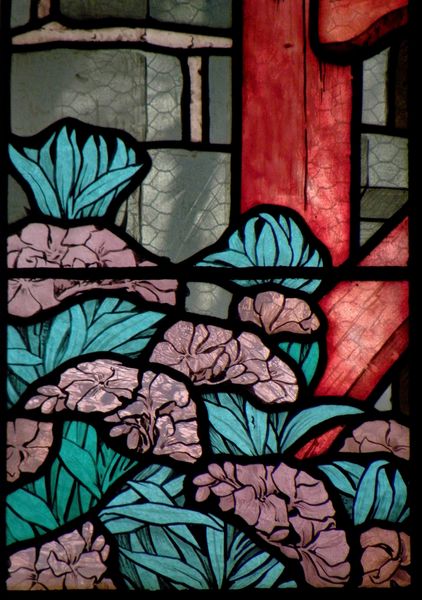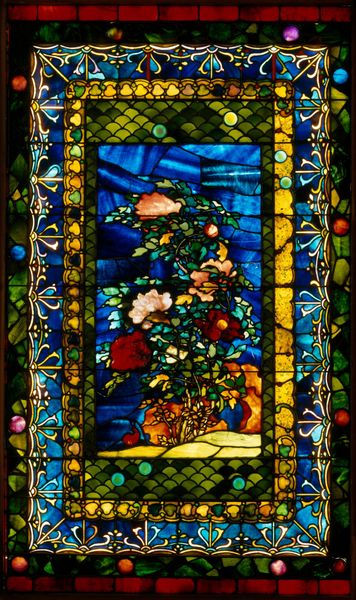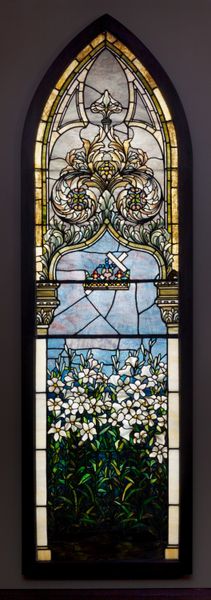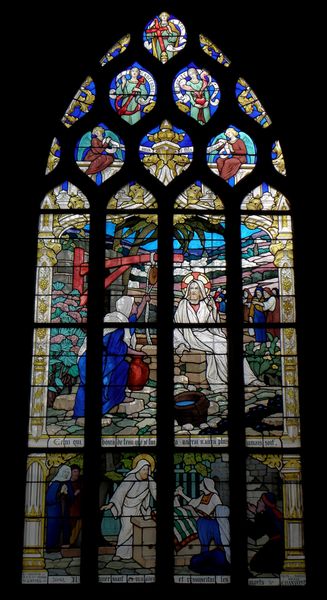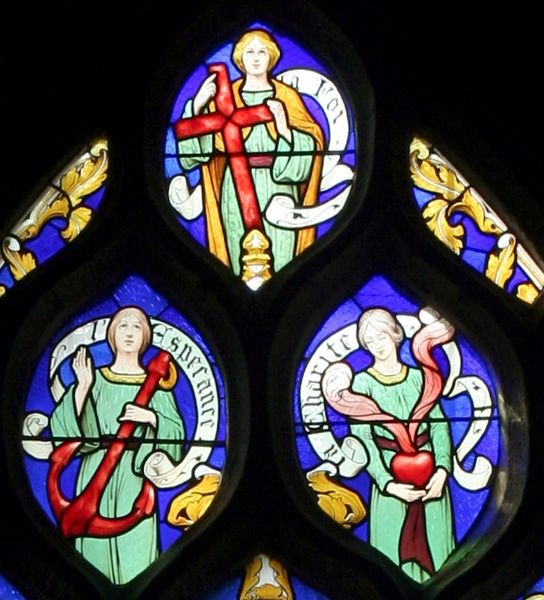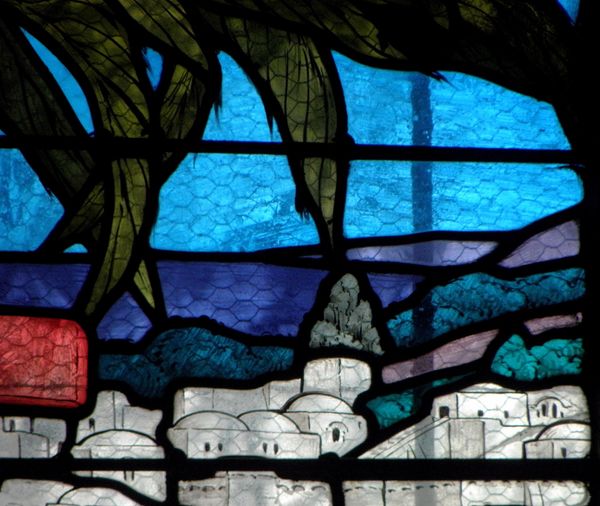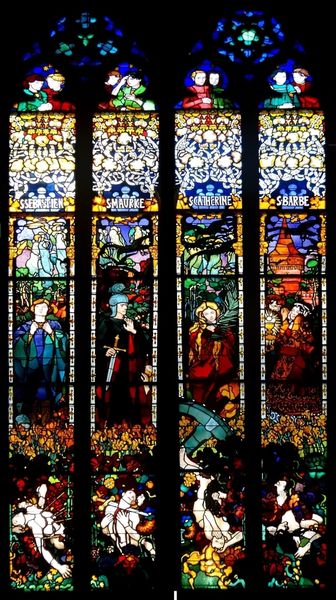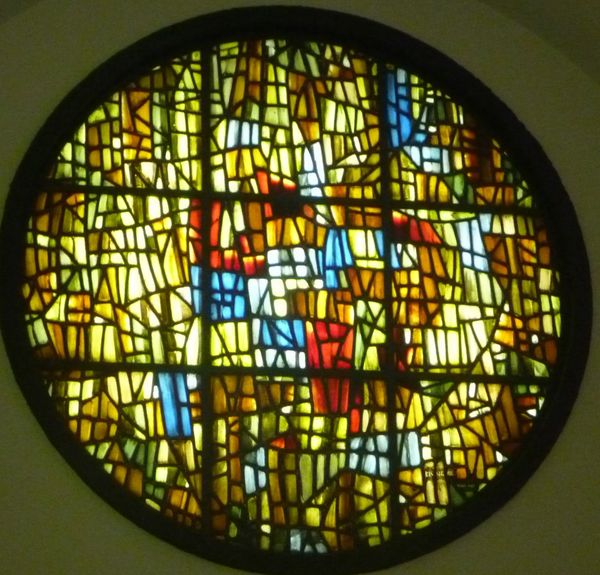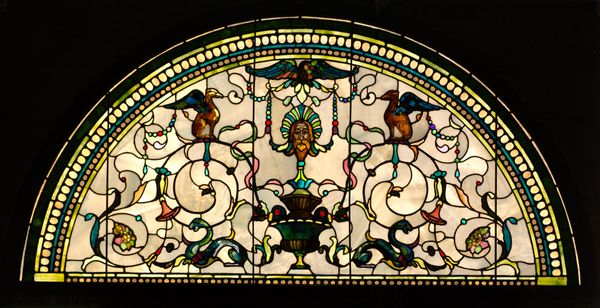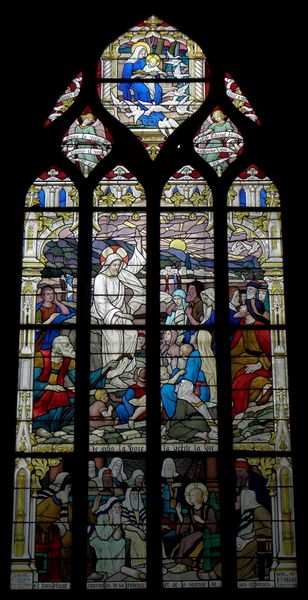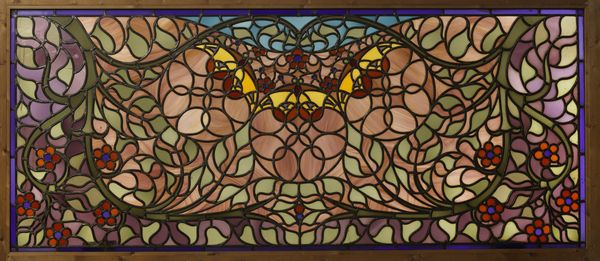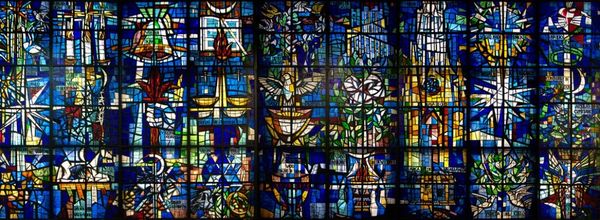
tempera, glass
#
medieval
#
tempera
#
pattern
#
pattern
#
gothic
#
geometric pattern
#
glass
#
abstract pattern
#
geometric
#
pattern repetition
Dimensions: Overall (.1): 24 5/8 x 8 3/8 x 5/16 in. (62.5 x 21.3 x 0.8 cm) Overall (.2): 24 5/8 x 8 3/8 x 5/16 in. (62.5 x 21.3 x 0.8 cm)
Copyright: Public Domain
Curator: At first glance, the overall feeling is... opulent. Almost dizzying in its density. The vibrant colors against that dark framework feel both luxurious and somewhat overwhelming. Editor: Indeed. What you're responding to is part of a larger story. This work, "Two Sections of a Border," comes to us from the Rémois Atelier, dating to 1175-1200. Constructed using tempera paint on glass, this piece now resides at the Metropolitan Museum of Art. Think of it not as a standalone artwork, but rather as a fragment of a once grander design, perhaps from a monumental stained-glass window within a gothic cathedral. Curator: So, considering its likely original context within a sacred space... those repetitive geometric shapes, they evoke a sense of divine order, right? The motifs create a symbolic barrier. What meaning was intended by these visual barriers? Editor: Borders in illuminated manuscripts and stained glass served a variety of purposes, both aesthetic and symbolic. Functionally, they would help direct the viewer’s gaze, organizing the pictorial space. Theologically, it may define and separate earthly versus divine realms. Also, consider the pre-literate audience encountering this piece. Curator: Ah, yes. I had forgotten about that. And the colours themselves? I see a very deep red, a rich, cobalt blue… Editor: Absolutely. Color in the Medieval period held immense symbolic weight. Blue, for example, was associated with the Virgin Mary, while red often signified the blood of Christ, so depending where in the original border these sections came from, their use may reflect figures contained within the glass. What messages are relayed with the repeated tear drop? The trefoil design? Curator: That is the truly brilliant piece. Today's context alters the intended messages. The patterns create interesting boundaries through time, a contemporary pattern based off Medieval values and messages. Thank you! Editor: And thank you. Considering the enduring power of these symbols, we can't ignore how they continue to echo, morph, and adapt within modern life.
Comments
No comments
Be the first to comment and join the conversation on the ultimate creative platform.
